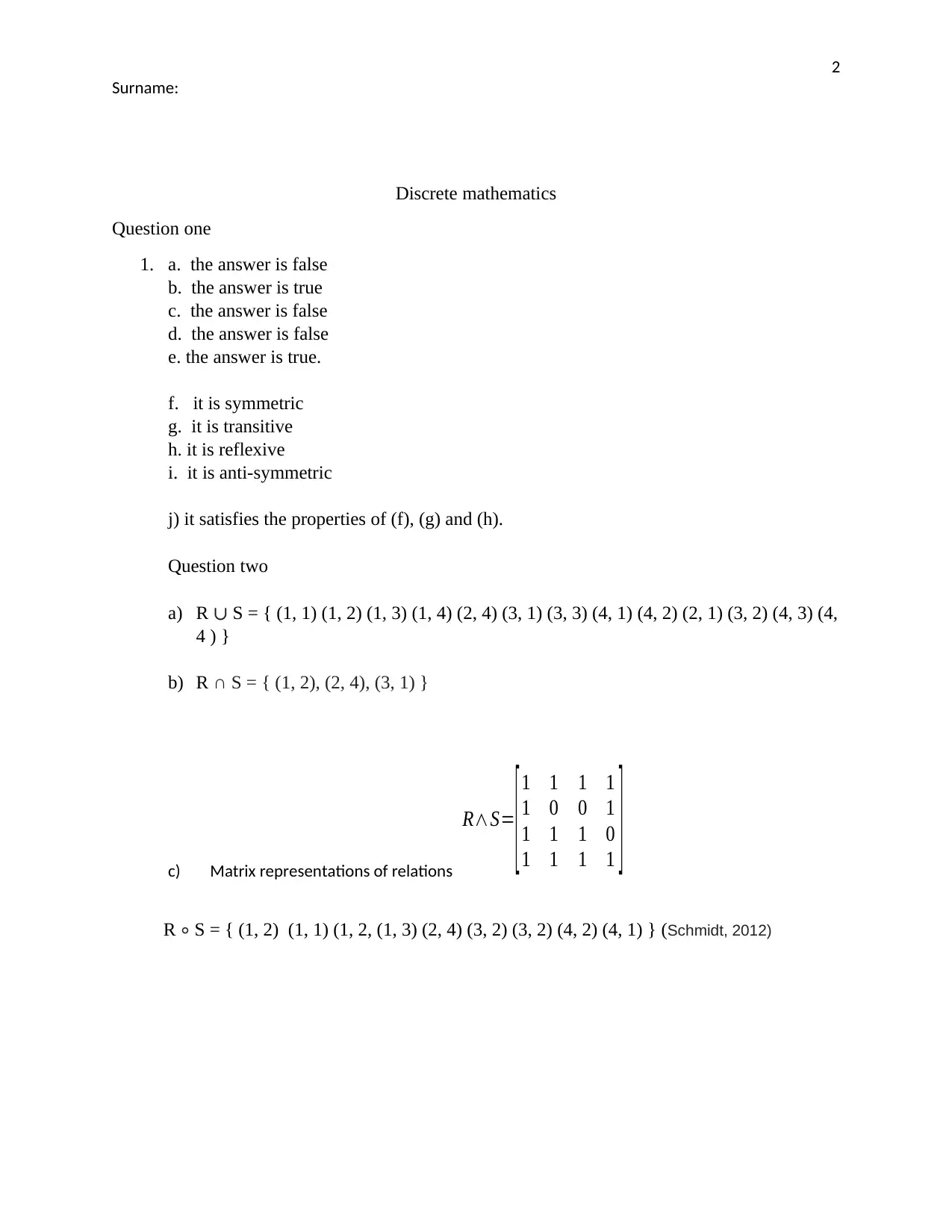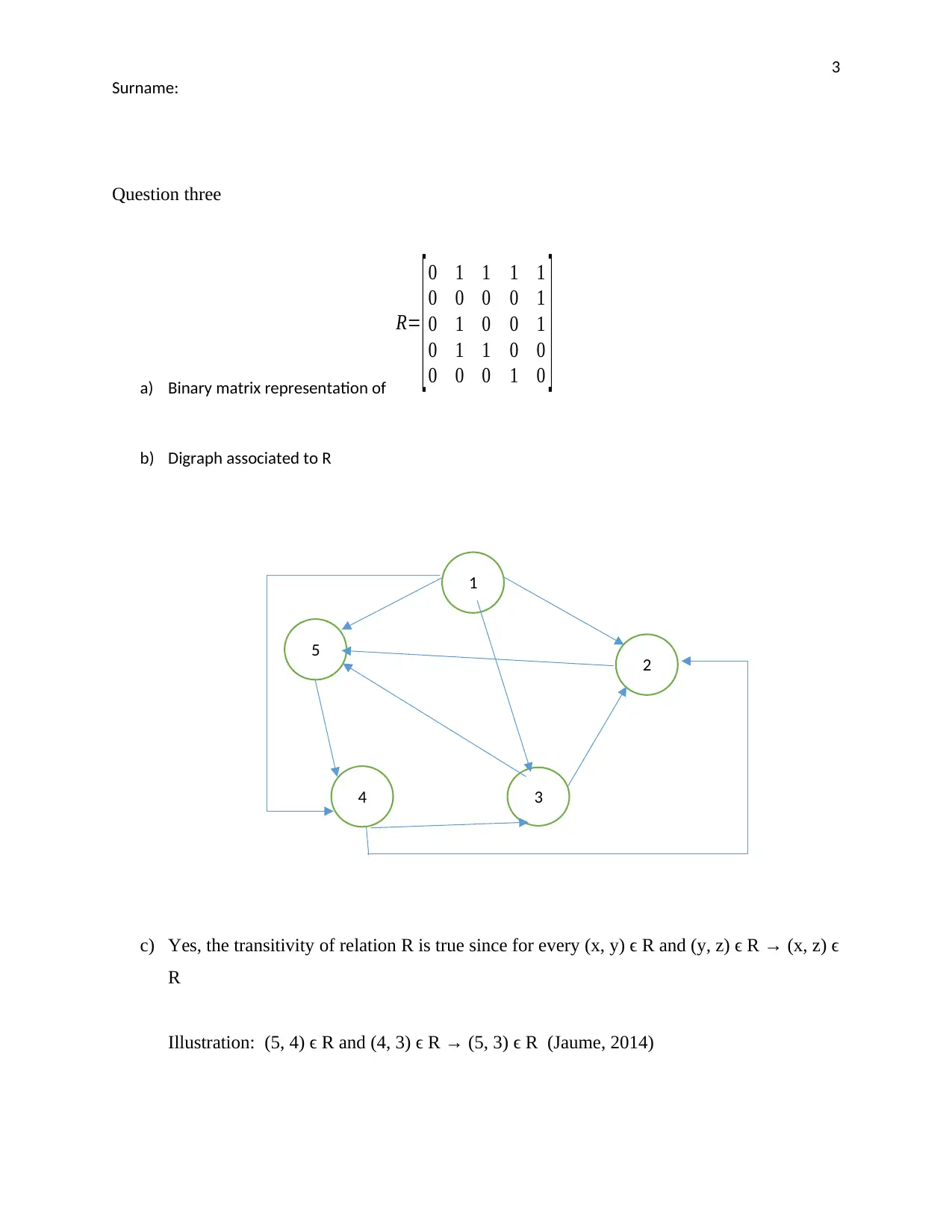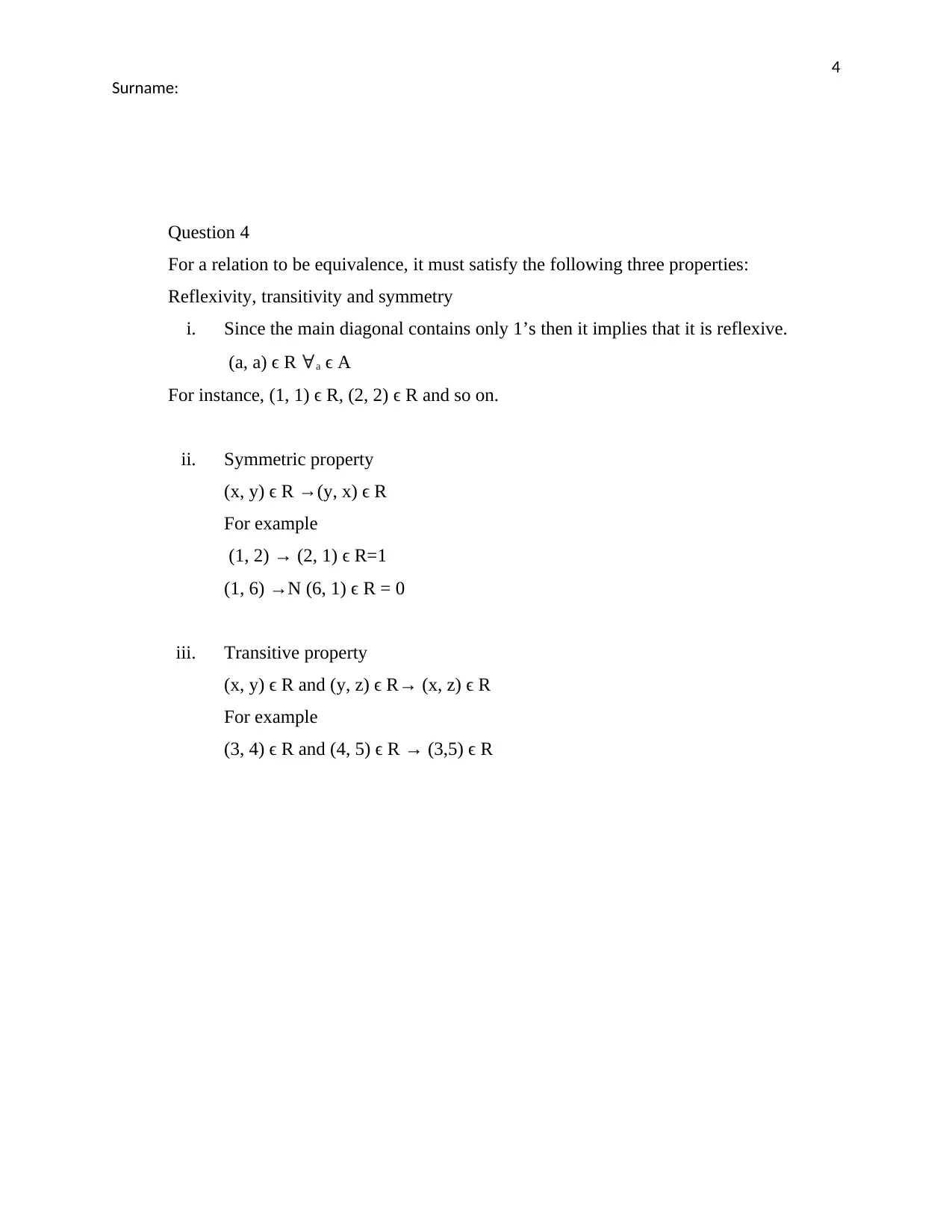Discrete Mathematics Homework: Relations, Matrices, and Equivalence
VerifiedAdded on 2023/04/21
|5
|610
|383
Homework Assignment
AI Summary
This document presents a solved homework assignment in discrete mathematics, focusing on relations and their properties. The solution addresses questions related to the truth values of logical statements, operations on relations such as union and intersection, and their matrix representations. It further explores binary matrix representations and digraphs of relations, including the concept of transitivity. The assignment also delves into equivalence relations, verifying reflexivity, symmetry, and transitivity based on provided examples. The solution includes references to relevant academic sources, providing a comprehensive understanding of the concepts discussed.
1 out of 5












![[object Object]](/_next/static/media/star-bottom.7253800d.svg)